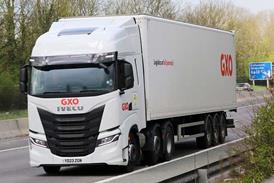
Slowly but surely the longer semi-trailer trial is getting ever closer to its trial target of 1,800 vehicles on the road, according to the findings of the third annual report by Risk Solutions.
Yes, it’s more than three years into a trial that has been beset with problems, but 2016 should finally see all the trailers on the road (that’s the best guess with current trailer lead times).
Happy days then, with the next major hurdle now the need to address what will happen beyond the ten-year trial period. After all, as we head towards the halfway mark operators are likely to become increasingly reticent about ordering new trailers, given that they have a potentially limited shelf life and questionable second-hand value.
It was with a certain surprise then, that The Hub learnt in conversation with SDC boss Mark Cuskeran – while discussing the firm’s award winning longer semi-trailer collaboration with Malcom Logistics – that SDC and its friendly rivals still don’t actually receive a copy of the aforementioned annual report directly.
Instead, they rely on their customers to send it on to them (it is also made publically available online, but the point is manufacturers aren’t part of the inner-circle).

This seems ridiculous, as SDC through a partnership with Lawrence David have produced, according to Risk Solutions, 37% of the longer semi-trailers currently in service – the most of any individual manufacturer or pairing.
Without manufacturers like themselves, Cartwright, Gray & Adams and Don Bur, there would be no trailers to gather trial data from.
They seem the definition of the government’s favoured term of a stakeholder, yet have remained in second-class throughout the trial (one can’t but help feel it wouldn’t have had to have been rebooted after stalling if manufacturers had been listened to more in the initial planning stages and some of the more arbitrary restrictions such as the 50/50 allocation split avoided).
Given that the trail is at its heart about improving efficiency and boosting productivity within road transport, communication with those involved has been anything but. A change in regards this would be a change for the better.













